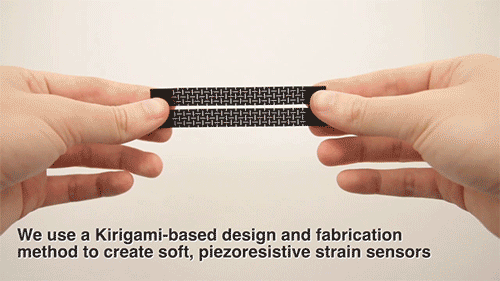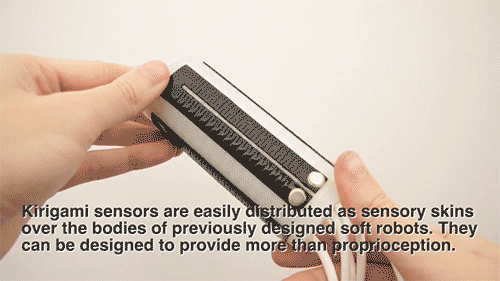A team at MIT’s CSAIL demonstrated a new kind of “skin” designed to bring a sense of touch and place to soft robotic arms. The findings, which debuted in the IEEE Robotics and Automation Letters this week, find the researchers covering a soft robotic “trunk” in flexible sensors made from material used for “electromagnetic interference shielding.”
The usually rigid material was reconfigured into a “kirigami” configuration, lasercut and reassembled into chain linked rows, so it can be stretched and flexed, to adhere to the shape of the robot and move with it. The components are essentially off-the-shelf for most labs and could serve as a low cost way to add a sense of touch to the growing field of soft robots.
“Think of your own body: You can close your eyes and reconstruct the world based on feedback from your skin,” CSAIL’s Daniela Rus said in a release announcing the research. “We want to design those same capabilities for soft robots.”

Researchers then built a neural network to process the results and distinguish the signal from the noise that the sensors were collecting, reinforced by a more traditional motion capture system. Moving forward, CSAIL will be exploring new configurations and working to improve the neural networks.